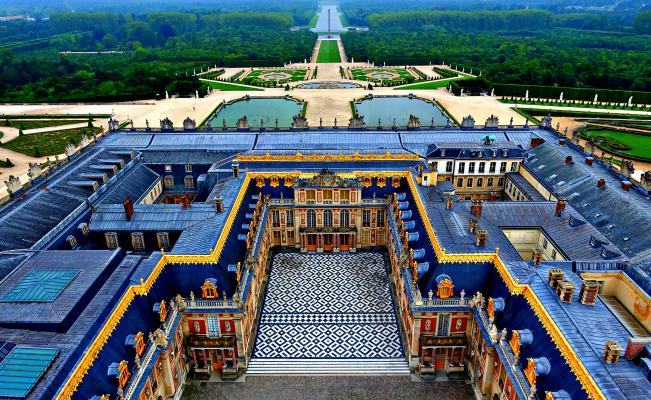Welcome to the Palace of Versailles, the masterpiece of France

With an imposing architecture and more than 800 hectares of gardens, the Palace of Versailles combines history and culture and is one of the most visited places in France.
Declared a World Heritage Site by UNESCO for over thirty years, the Palace of Versailles is one of the best known palaces worldwide, not only for its imposing architecture and its endless and well-kept gardens, but because it constitutes an important part of The history of France.
The beginnings of the palace
Louis XIV was the first to transform and expand the hunting lodge of his father, Louis XIII, where he would install the Court and the government in 1682. From then until the arrival of the French Revolution, different monarchs were succeeding in the throne and continued to beautify the palace.
In 1661 the works for the creation of the Gardens of Versailles began, that would not be finished until forty years later.
¿What to see in the Palace?
The Palace of Versailles offers visitors an opportunity to appreciate the kind of life that some kings of France had in the Palace.
Bedrooms and other rooms are restored to their original state and invariably cause astonishment reactions among visitors, who realize the great luxury and exaggeration of royalty from past centuries.
Today, Versailles is a national palace where heads of state from other countries are received. In addition, it has several sections open to the public, which are a great tourist attraction in the region.
The Palace of Versailles inside
The most visited of the Palace of Versailles are the Hall of Mirrors, the Royal Chapel and the Opera House. However, the gardens are also a great attraction for most tourists.
Hall of Mirrors
Also known as «La Galerie des Glaces», this is perhaps the most famous room in the Palace of Versailles. It measures about 76 meters long and has 17 arched mirrors aligned with 17 windows overlooking the palace gardens.
The ceiling is decorated with paintings that tell several stories of Louis’s triumphs.
Opera House of the Palace of Versailles
The Opera House is recognized, among many other things, for its perfect acoustics.
By the time, the Opera House was too big. The place takes place for 712 comfortably seated people.
An interesting aspect of the Opera House is that it has a mechanism that allows the auditorium floor to level with that of the stage in such a way that it becomes a huge room.
Royal Chapel of the Palace of Versailles
This is where Louis XIV listened to mass every day and where Louis XVI and Marie Antoinette married. The architecture of the Royal chapel is Gothic and Baroque at the same time and its columns are typical of 1700.
Louis XVI listened to the masses from a platform at the same level as the royal departments, only went down to the chapel for ceremonies or very important events.
The visit to the gardens
The impressive Gardens of Versailles have an area of more than 800 hectares along which plants and all kinds of trees are spread, in addition to a large number of marble statues, ponds and fountains.
It is practically impossible to visit all the gardens, but there are different ways of trying, for example by renting a bicycle or an electric car, or with the little train that runs through the gardens.
L’Orangerie at the Palace of Versailles
The gardens of the Palace of Versailles offer a magnificent opportunity to relax while astonishing its visitors. Outside the Palace, on the left side watching from the facade, is the l’Orangerie.
This was where the king had his orange trees, he was the only person who could grow oranges in Paris. Louis had mobile orange trees that could be taken to greenhouses when the weather required it.
Grand Canal in the Palace of Versailles
In the gardens of the Palace of Versailles is also the Grand Canal. This is a large artificial lake ordered to be built by the king.
On the Grand Canal used to navigate war galleys and other vessels, including Venetian gondolas which served for royalty to wander the lake.






